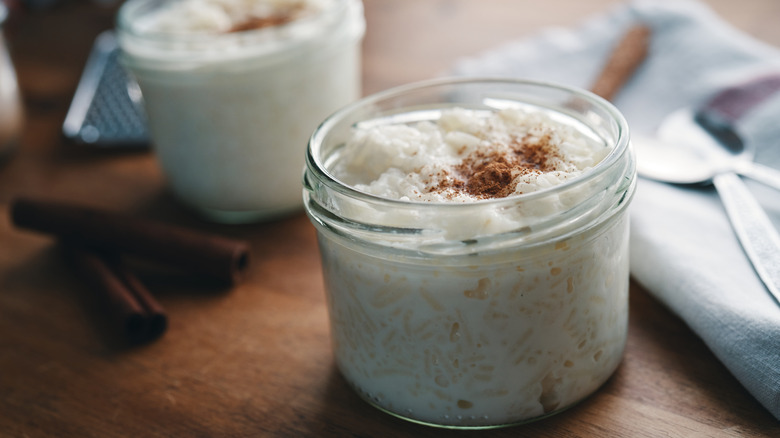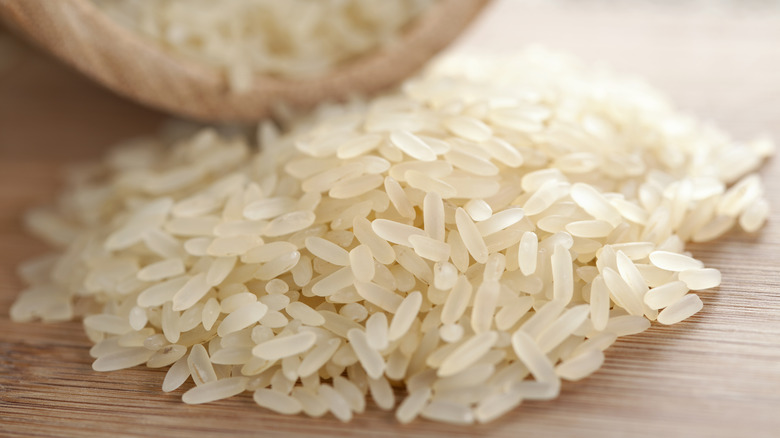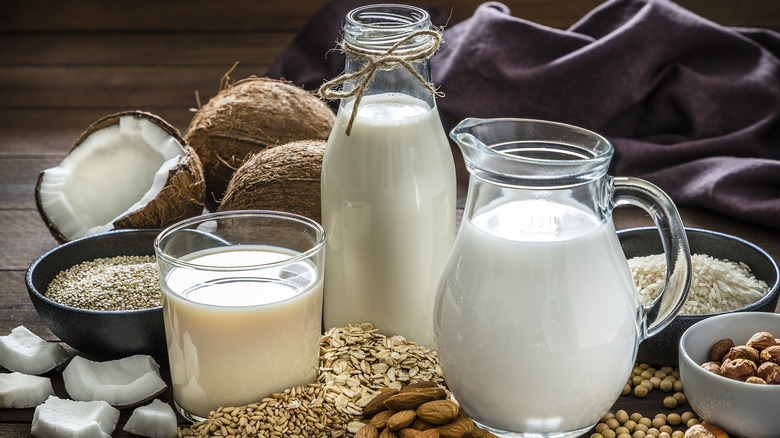The Best Type Of Rice To Make Creamy, Al Dente Pudding
Many cultures around the world have their own version of rice pudding with unique flavors and special traditions, but the reason we all love this dish is universally shared: its deliciously creamy and complex texture. There are just a few ingredients in rice pudding, so it's no wonder that the secret to this dessert is based on its star ingredient, rice. Among the thousands of rice varieties in varying shapes, sizes, and colors grown around the world, basmati rice is the best for achieving the ideal consistency and flavor in rice pudding. Why? It releases more of a specific starch that gives your pudding extra creaminess, with delicate rice that still has some bite.
Basmati is a long-grain white rice that was first domesticated at least 300 years ago in India – where it is still grown and enjoyed today in kheer, a traditional Indian rice pudding. As with most rice pudding recipes, kheer is made by cooking rice in milk that is then sweetened with sugar (or jaggery). Spices, such as cardamom, and other flavors are incorporated midway through the cooking process, and garnishes, like cashews, are added at the end.
Why the starch content of rice matters
There are two kinds of starch in rice: amylose and amylopectin. These starches vary depending on the kind of rice and are responsible for the consistency of a ready-to-eat rice dish. When cooking rice, the combination of heat and liquid causes the starch molecules within the grain to soften so that it becomes chewy, rather than brittle.
Basmati and other long-grain rice generally have a higher amount of amylose and a lower amount of amylopectin than shorter rice, which means that the individual grains will remain separate after cooking, developing a soft and fluffy (rather than dense and sticky) texture. A perfect rice pudding will be slightly al dente — while one that has been overcooked will become mushy. It generally takes about half an hour to cook rice pudding, but this depends on the quantity of rice and whether it is prepared on the stovetop or in the oven.
Choosing the cooking liquid and flavors for your rice pudding
While most rice pudding recipes will instruct you to cook the rice in dairy milk, many alternatives can be used instead. There are plenty of delicious vegan options, such as mango coconut rice pudding and saffron almond rice pudding. When you shop for basmati rice, you may also want to take inspiration from other traditional Indian ingredients to flavor your rice pudding.
Feel free to get creative with the spices and other ingredients, but keep in mind that the name "basmati" comes from the Hindi word for "fragrant" because this rice is characterized by having a delicate floral aroma, which you don't want to cover up too much. A tiny drop of rosewater, a few toasted nuts, or a sprinkle of fresh citrus zest can bring out these flavors. Rice pudding can be served in a big ceramic dish or in individual ramekins, but clear glassware is ideal for showing off the perfect texture and beautiful appearance resulting from the long grains of basmati rice.



